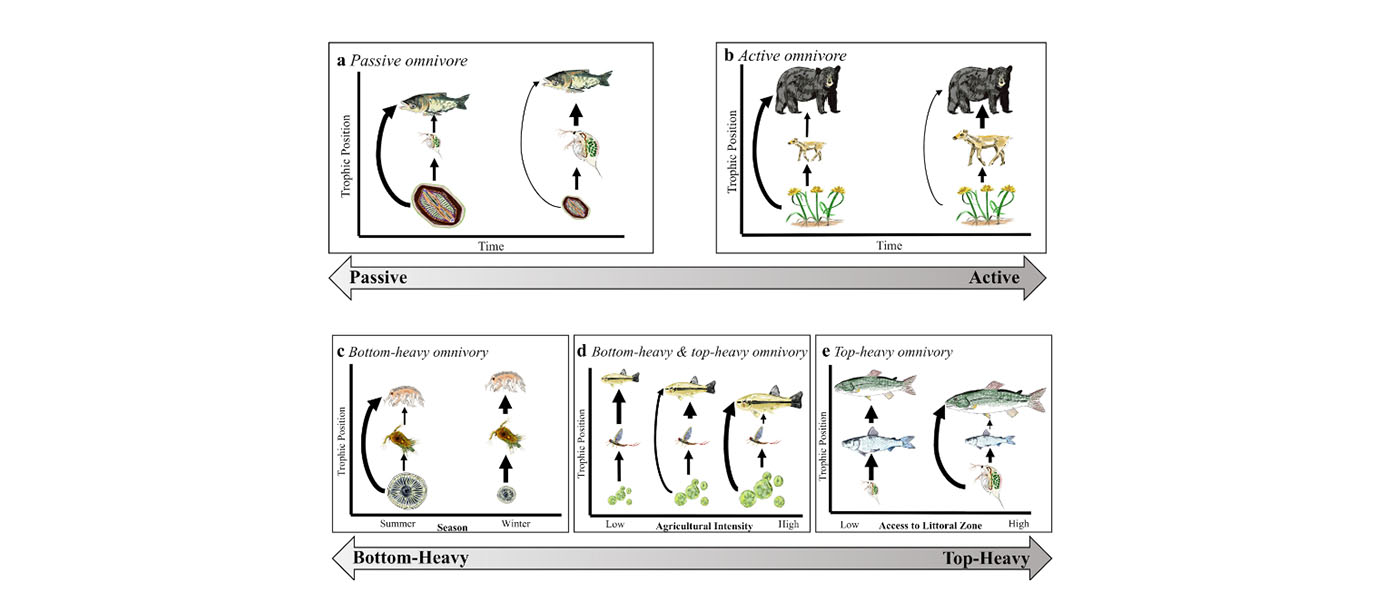
In school, we’re taught the basic workings of a food chain: carnivores such as wolves are on the top, herbivores such as rabbits are on the bottom, and in between are omnivores, like raccoons. Now a new theory developed by University of Guelph ecologists unravels this thinking.
Omnivores are present at all levels of a food chain, says Marie Gutgesell, a PhD candidate in the College of Biological Science. And as human activity and climate change affect their food sources, they can also change just how omnivorous they are.
For instance, agriculture can cause nutrient-loading into streams and lead to higher levels of algae. A predator like the creek chub fish might respond to that change by eating the algae, which is incredibly low in their food chain, instead of their usual diet of aquatic insects like mayflies when the stream is healthy.
Eating lower in the food chain can help to stabilize that food chain because it helps keep species’ population levels under check, which essentially ensures their ability to persist in the face of change, says Gutgesell in her research published in BioScience.
“Human stressors have a tendency to shorten the length of a food chain,” adds Dr. Kevin McCann, Gutgesell’s supervisor, a co-author of the paper, and a professor in the Department of Integrative Biology. “That means the animals are eating lower and lower in the food chain. They’re not eating well, and that’s potentially alarming.”
Learn from nature, and let it do the work

Gutgesell and McCann point out omnivory throughout the food chain isn’t new. What is new is the thinking around it. As McCann puts it, there was a long period of time where omnivorous activity wasn’t considered common.
“People actually ignored any kind of weak omnivorous interaction,” he says. “But sometimes research like this starts with asking: ‘How does nature work?’”
He and Gutgesell developed a model that categorizes omnivores into two groups: passive and active. They re-examined previous studies that used bio-tracers of energy flow, like stable isotopes, to see just how rampant dynamic omnivory is throughout the food chain. They also looked at previous studies on omnivory in response to human stressors and climate change.
“The model has shown omnivores are responding to different changing conditions by altering their diets and that this type of dynamic response is really prevalent throughout food webs,” said Gutgesell.
While this research looks only to present a model and theory to change the narrative around omnivory, Gutgesell and McCann hope it can be later used as a framework for understanding climate change implications for biodiversity.
Eventually they want to see omnivores, and their behaviour, used as monitoring tools for change.
“Predators are quite clever in terms of how they respond to conditions influencing their food chain,” adds McCann. “Can we use them as early warning signals of looming change that we as humans might want to know?”
This research was funded by Food from Thought at the University of Guelph and through a Discovery Grant from the Natural Sciences and Engineering Research Council of Canada.
Contact:
Marie Gutgesell
mgutgese@uoguelph.ca
Dr. Kevin S. McCann
ksmccann@uoguelph.ca
